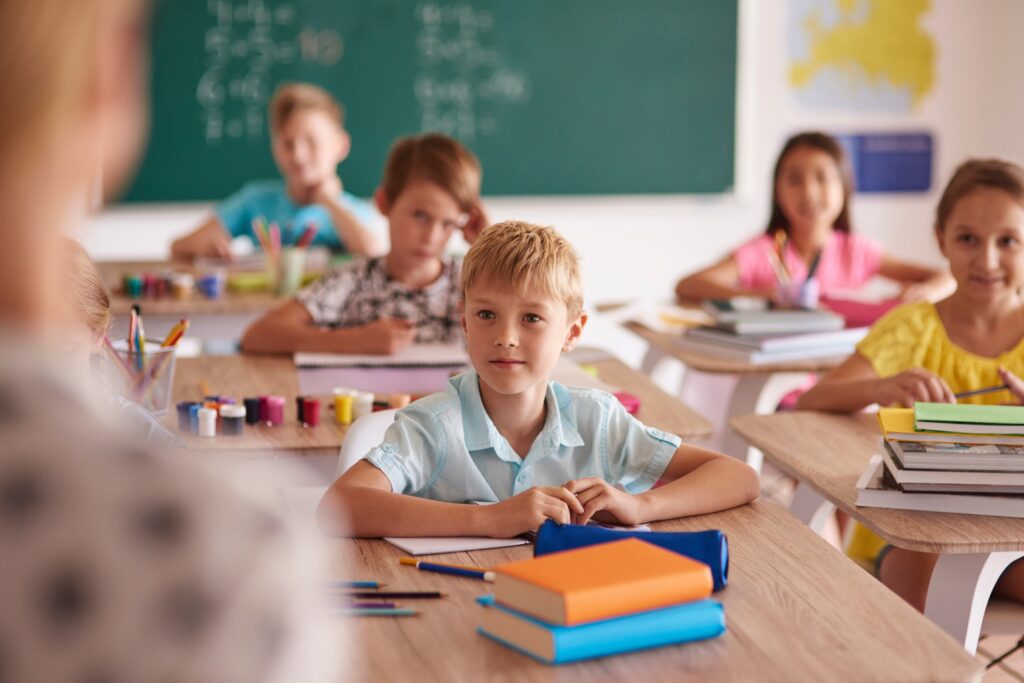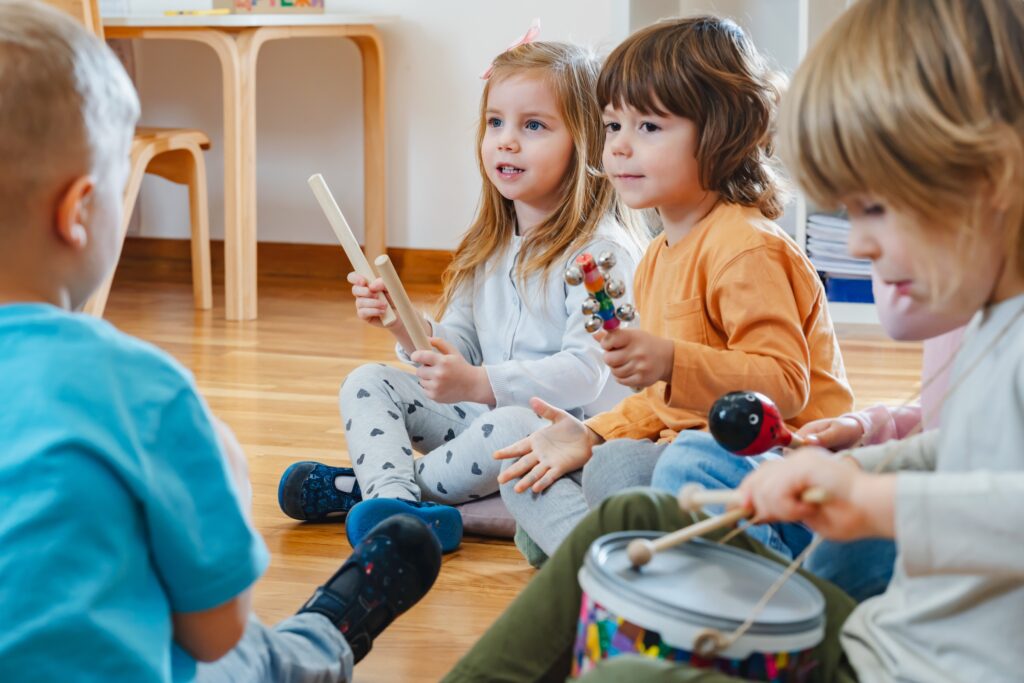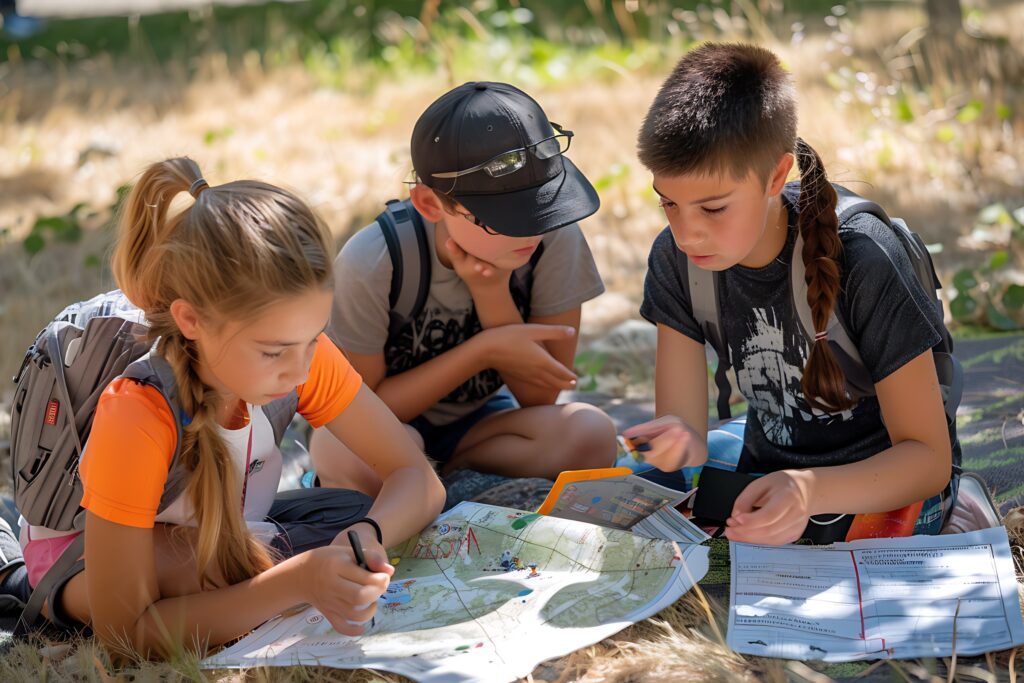So simple and so much

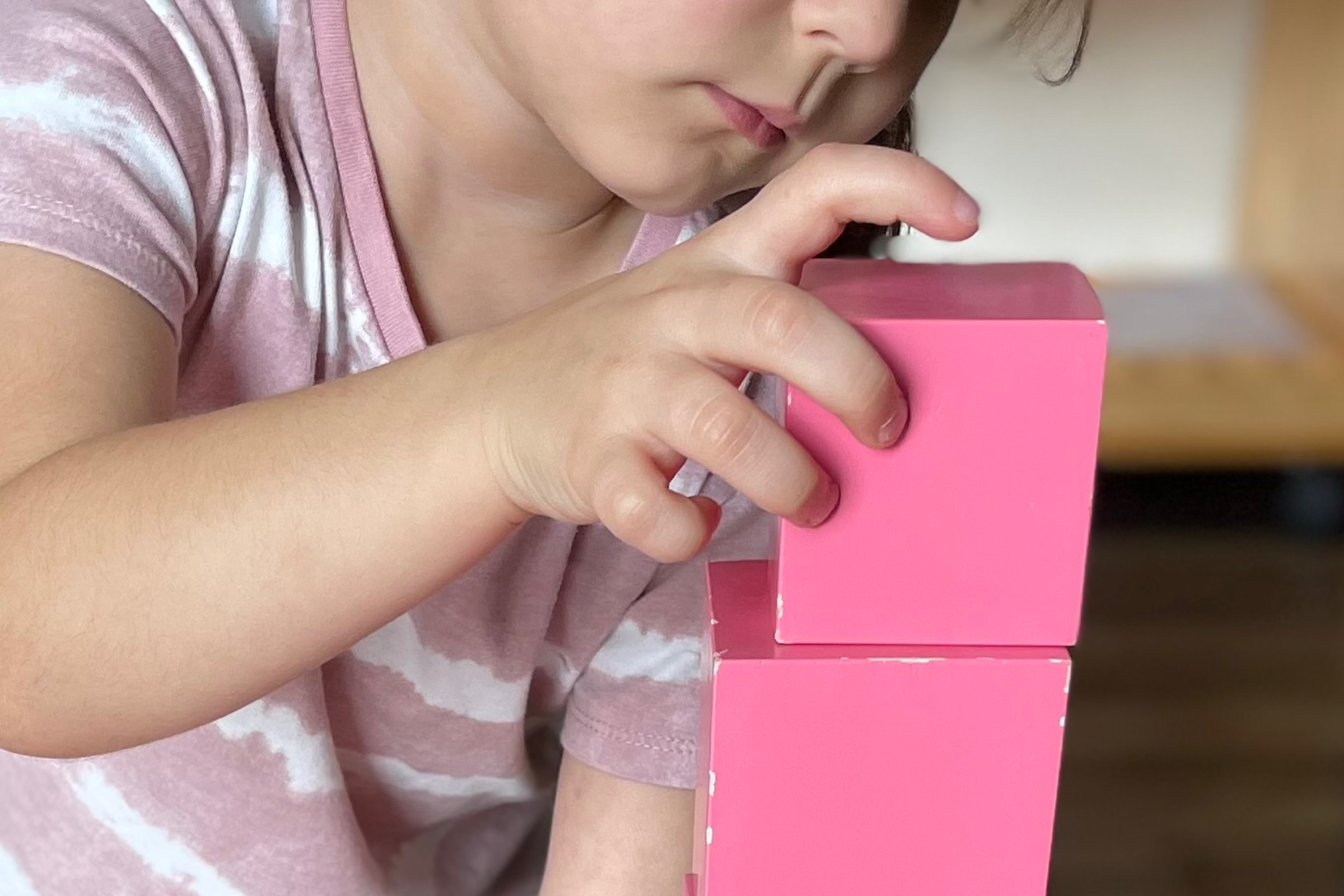
The amazing outcomes from a basic Montessori experience
If you have ever looked at the iconic piece of Montessori equipment, the Pink Tower, and thought, “Oh it is a stacking toy. We have other versions of those”, you would be missing over 90% of the functionality of the apparatus.
You are correct that it functions as a stacking toy, however some of the other aspects that might not immediately be apparent are listed below:
To begin with, the child unrolls their mat. This defines their own workspace. Defining their workspace provides them with a space that other children respect and allows them the opportunity to concentrate. This feature of the room culture of Montessori fosters a social responsibility in children to respect each other’s spaces. Concentration develops as children work without interruption for the length of time they require until they feel satisfied.
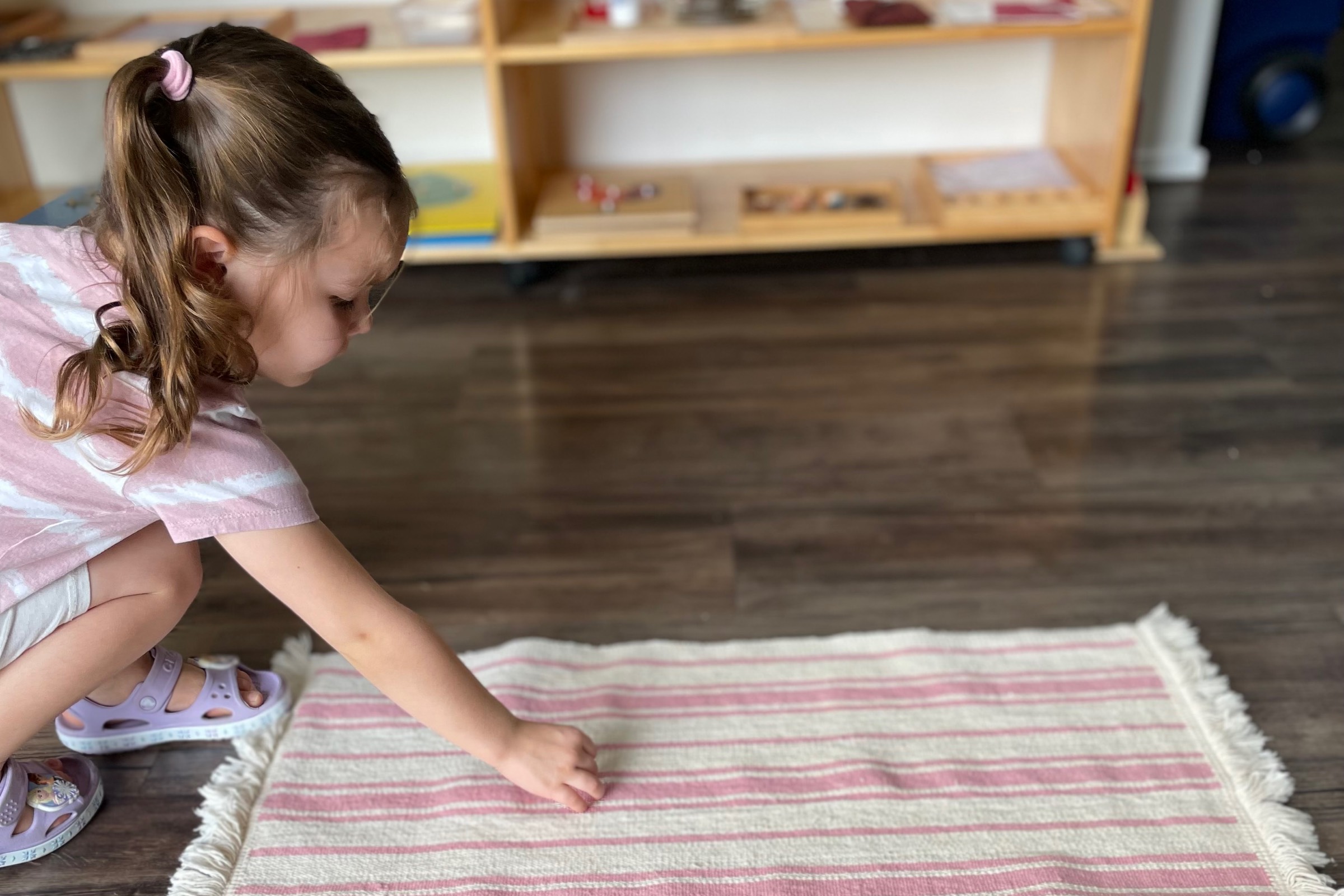
The activity is undertaken by the child walking to the shelf and selecting the smallest cube. This cube is carried back and placed carefully on the mat. The child then walks back to the shelf to repeat the process with the remaining 9 cubes. All this walking gives the child the opportunity to move which is important in all periods of life, but especially for the active preschooler! The walking is purposeful. This means that it is thoughtful walking – mindful – you might say. It is also not chaotic movement which occurs when children have the need to move and no relevant purpose to apply it to. It would be an interesting research piece to see how accurate Montessori was when she said, “Children who cannot utilise coordinated movements for an intelligent purpose destroy everything. They break things because the active muscular movement and the mind are not connected.” (Lecture 19, the 1946 London Lectures).
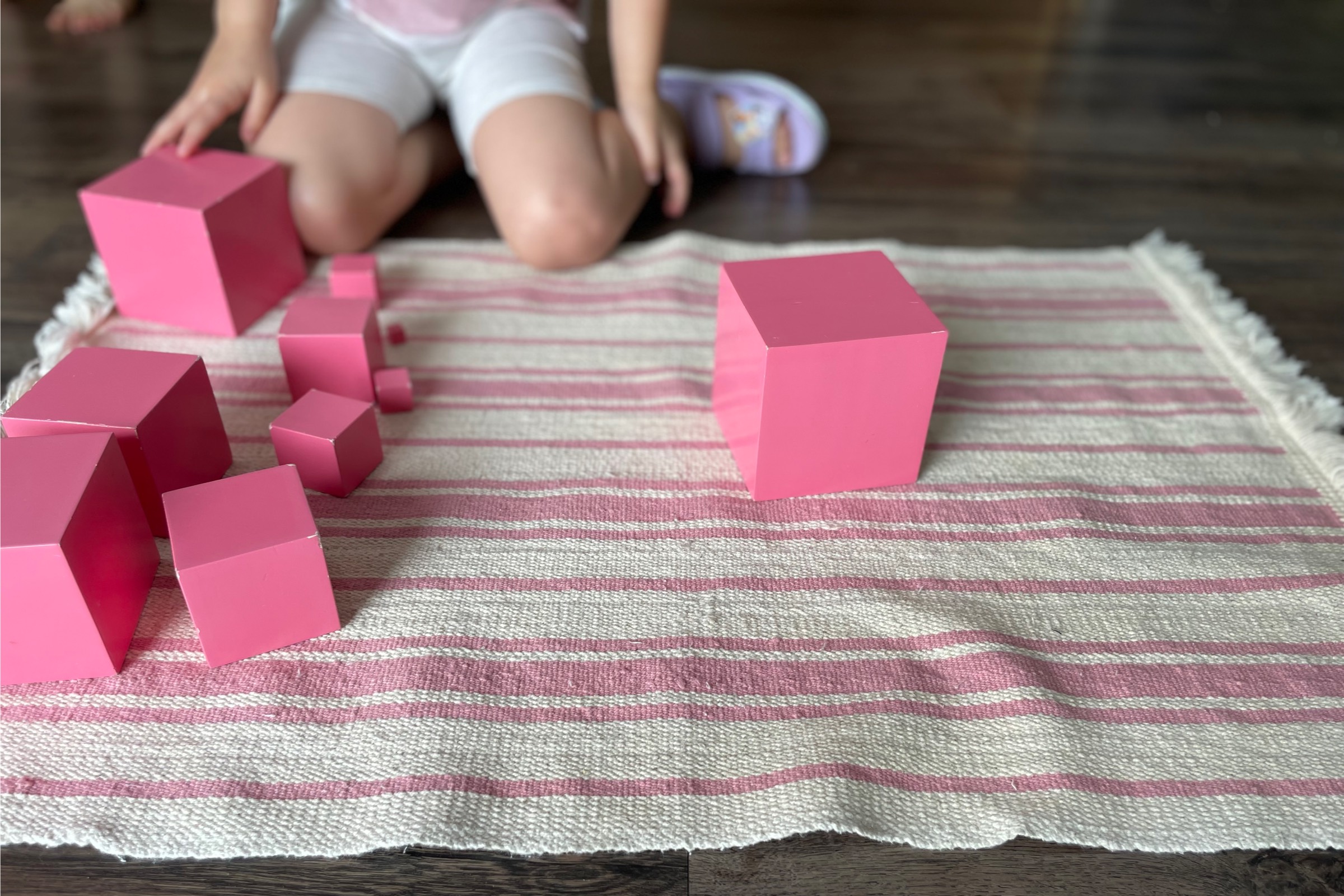
As they carry each piece of the pink tower, they hold them in their hands in a specific way depending on the size of the cube. The smallest snuggles in the palm of the hand, but the largest requires two hands to hold. This develops the stereognostic abilities of the child, or ‘muscle memory’. It is a tangible experience of different volumes and sizes which provides an imprint on the child’s memory which will support geometry and volume studies in due course.
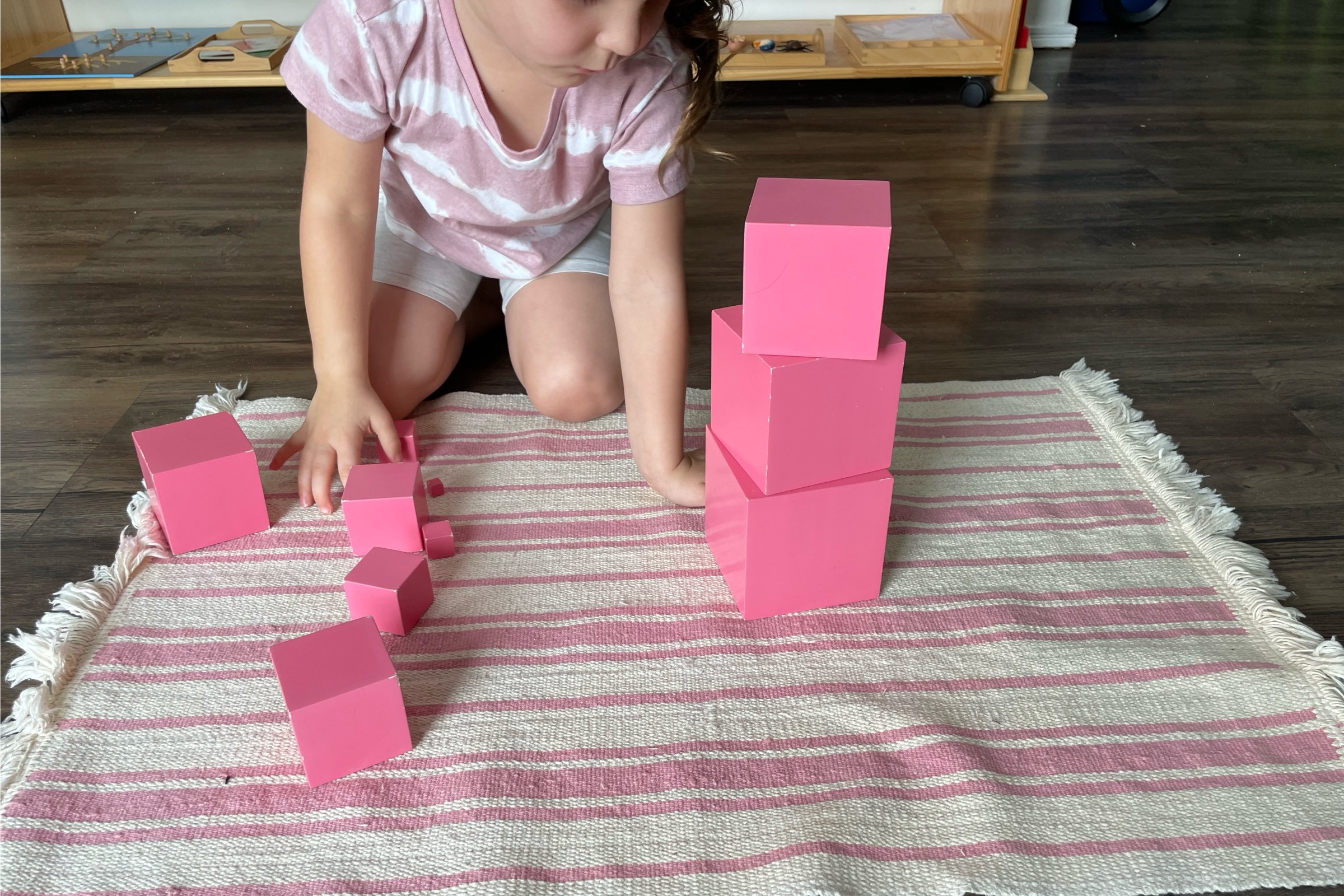
As they build the tower, they use visual discrimination to determine the next smallest cube to place atop the tower. There are no clues such as different colours of the block, the alphabet printed, or numerals that might jog their memory – even if they cannot yet decipher the character. The neural pathways of the mind must carry the visual information which is then decoded. This is called ‘visual processing’ and is a critical factor in writing, reading and numeracy. The child’s visual discrimination is refined through the practice of using it.
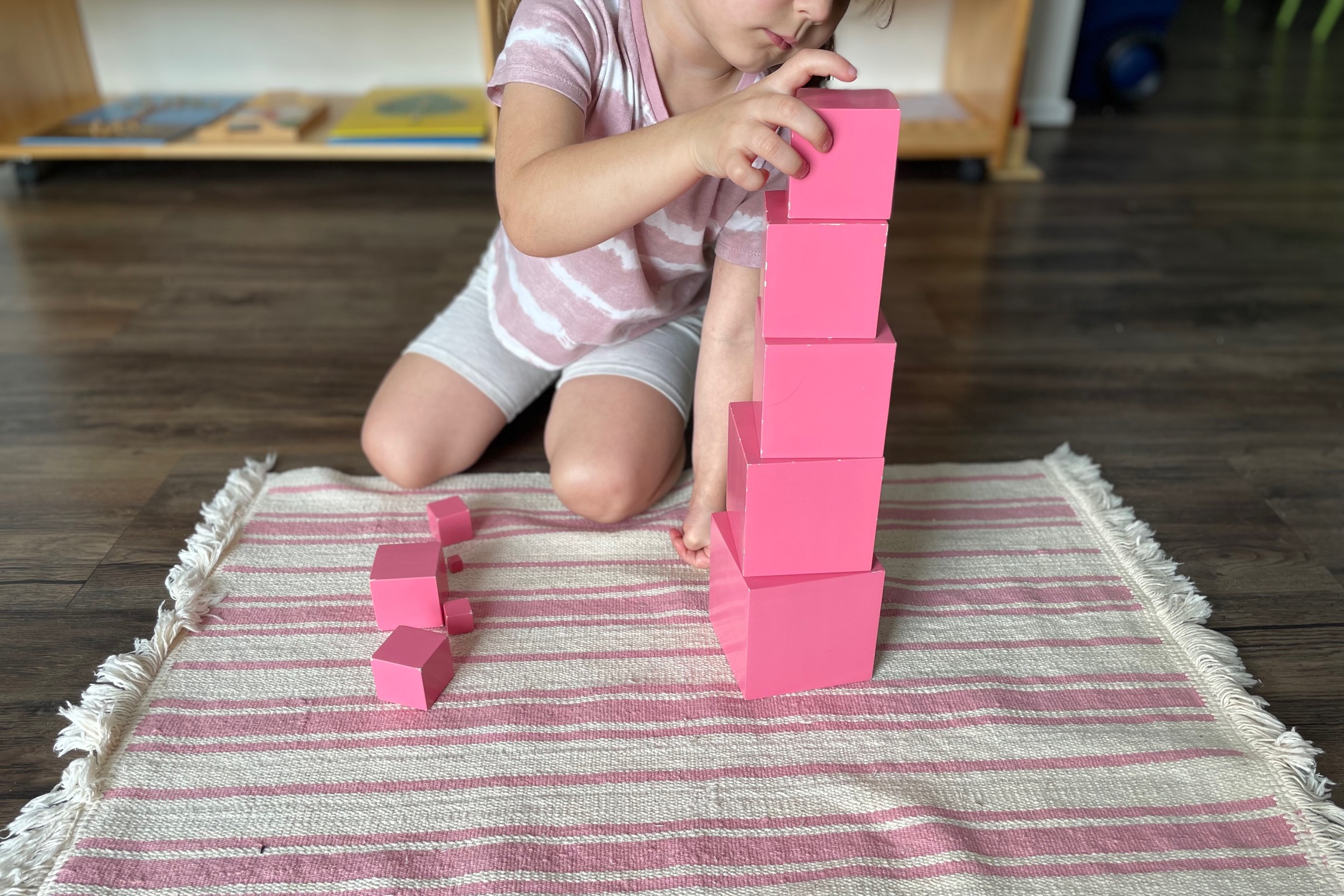
As they complete the tower, they may notice that the tower appears uneven. The child may recognise that a cube or two is out of sequence, dismantle the tower to that point and rectify the error. Fixing our own errors is a significant process that assists in learning the concept. Children may repeat the pink tower many times, including to perfect it’s appearance with each block equally placed for a precisely uniform outcome. Doing so gives the child a great sense of satisfaction and the capacity to work to completion on tasks. Self-esteem across our lifetime is generated by having a number of achievements, and the Pink Tower completion provides that joy of success.
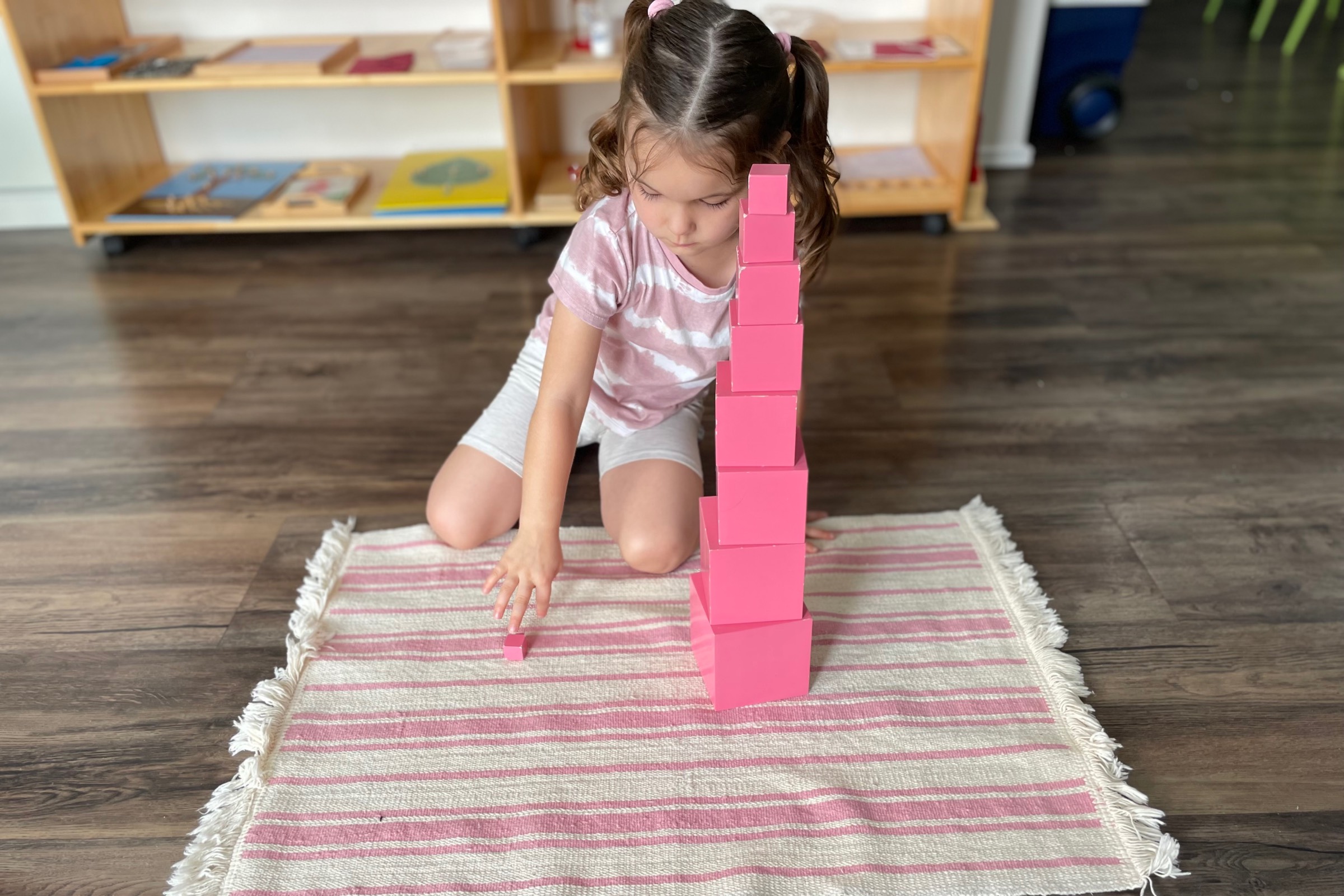
When the child is satisfied, they dismantle the tower and take each block in order back the shelf-essentially consolidating the learning by building the tower again, back in its place. This is more purposeful walking. The children returns the mat to its place also. Hence the child provides the material for another child to use, and understands to choose their next activity from the abundance of options in the classroom. Children in preschool are not yet developed enough in many cases to effectively ‘share’, however turn taking, choosing materials that are not being used by others and returning materials after use builds social responsibility and a solid basis for co-operative play and work as the child matures.
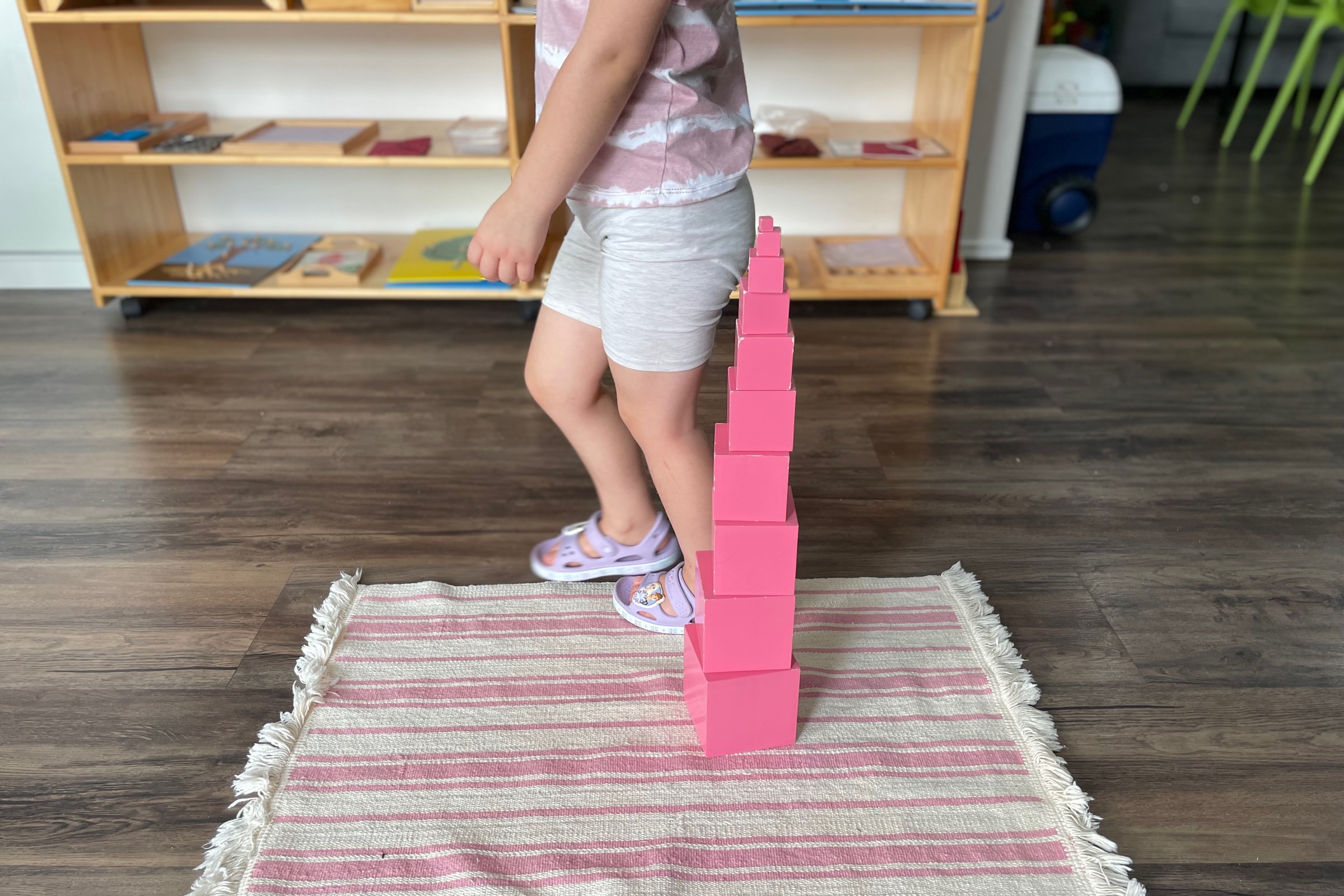
Children may repeat activities, and the smallest cube fits neatly on the ledge created when the tower is built with one side flush. Without understanding the concept, the child visually and materially becomes aware of the units of construction of the material, the comparison of adding a single cube to equal the length of the cube below, and even measuring how many single cubes it might take to equal the length of larger cubes. Extension work also includes combining the pink tower with other related apparatus such as the Brown Stair for further discoveries, comparisons and constructions providing concrete mathematical experiences.
The multi-age classroom provides the opportunity for older children to support younger children. The Pink Tower is one apparatus that an older child might commonly present or demonstrate to a younger child. For the 5-6 year old child it is a revisiting of the concepts that they encountered earlier in the time, consolidating the learning that took place. It provides the older child with the opportunity to engage in leadership and mentorship, developing their confidence and their interest in contribution to their community. Children also seem to learn more easily from peers than adults. The younger child in the classroom is provided with peer role models and gain enormously from these relationships.
It is much more than a stacking toy.
Every part of the Montessori curriculum has direct aims, indirect aims, indirect preparation for later learning and a system of classroom methods that all work together to provide the best possible outcomes for children.
If you are a parent seeking a Montessori education for your child, please look at: https://montessori.org.au/schools-and-centres-directory
If you are a Montessori Centre or School seeking software or training please look at:
Training: mecta.edu.au
Software: yourchildsday.com
Helping children thrive is a shared journey. Spread the word and support fellow educators with insights and resources from Your Child’s Day.
Resources, advice, and uplifting stories for educators and families. No spam, ever.

